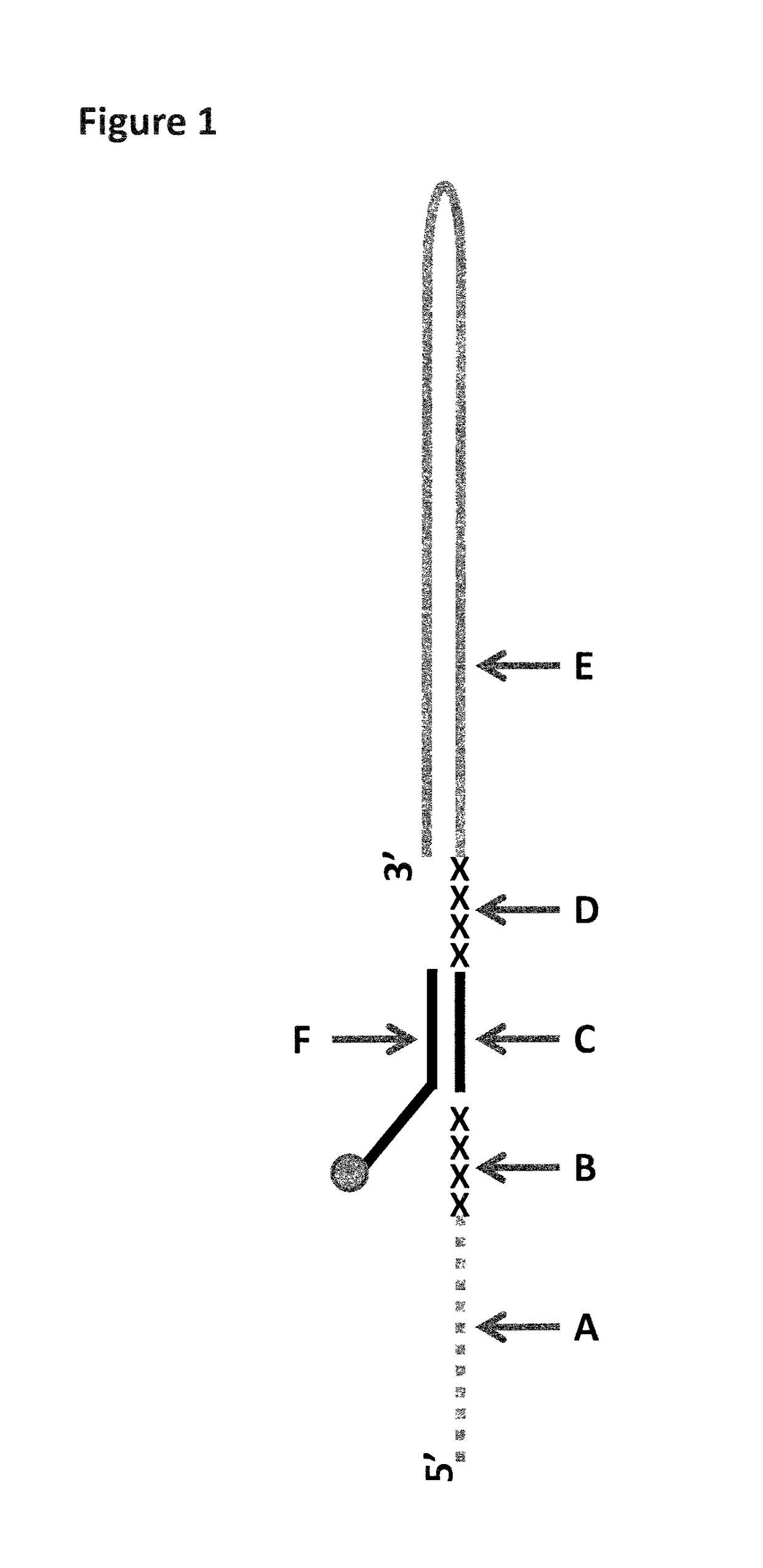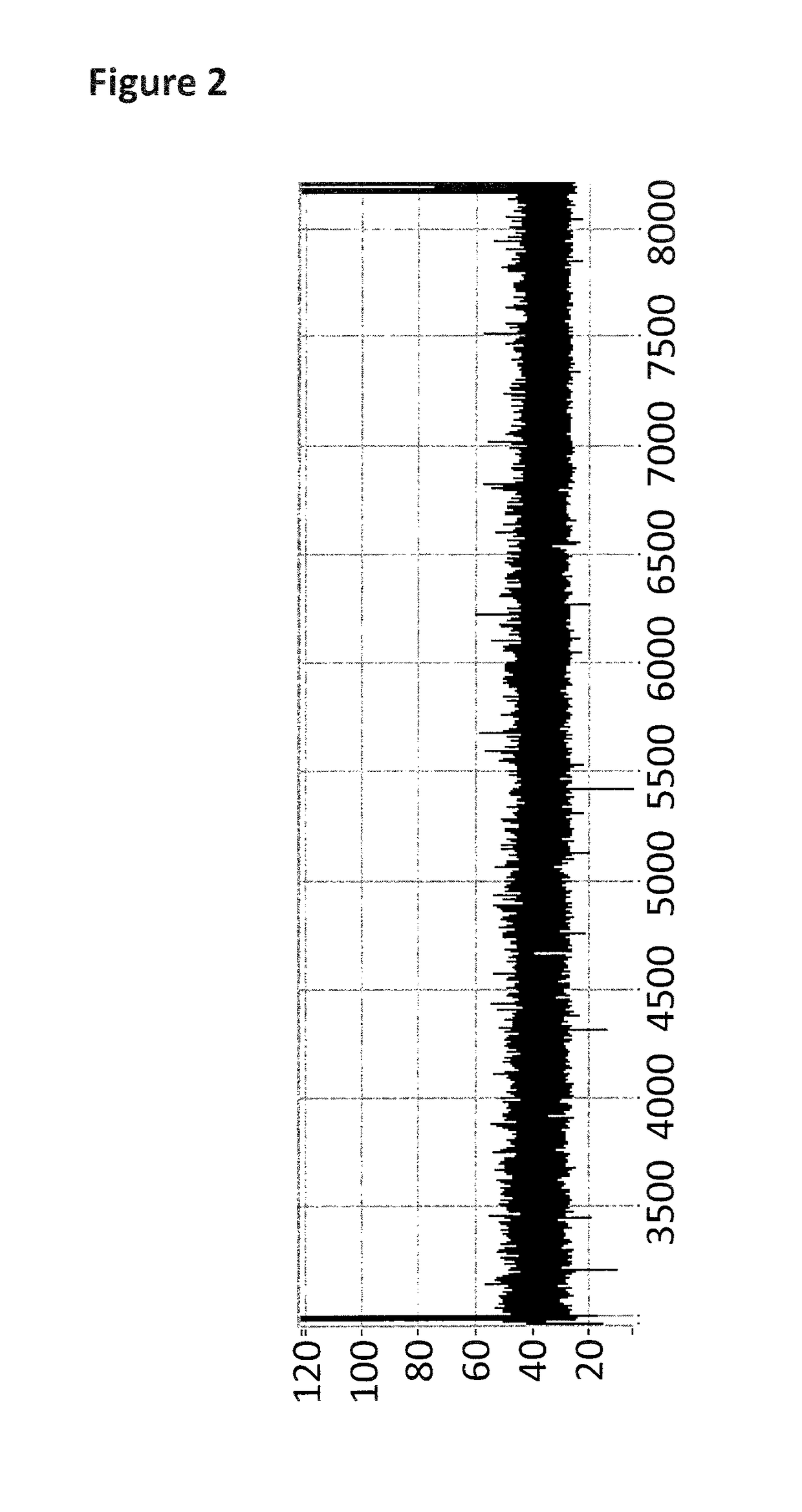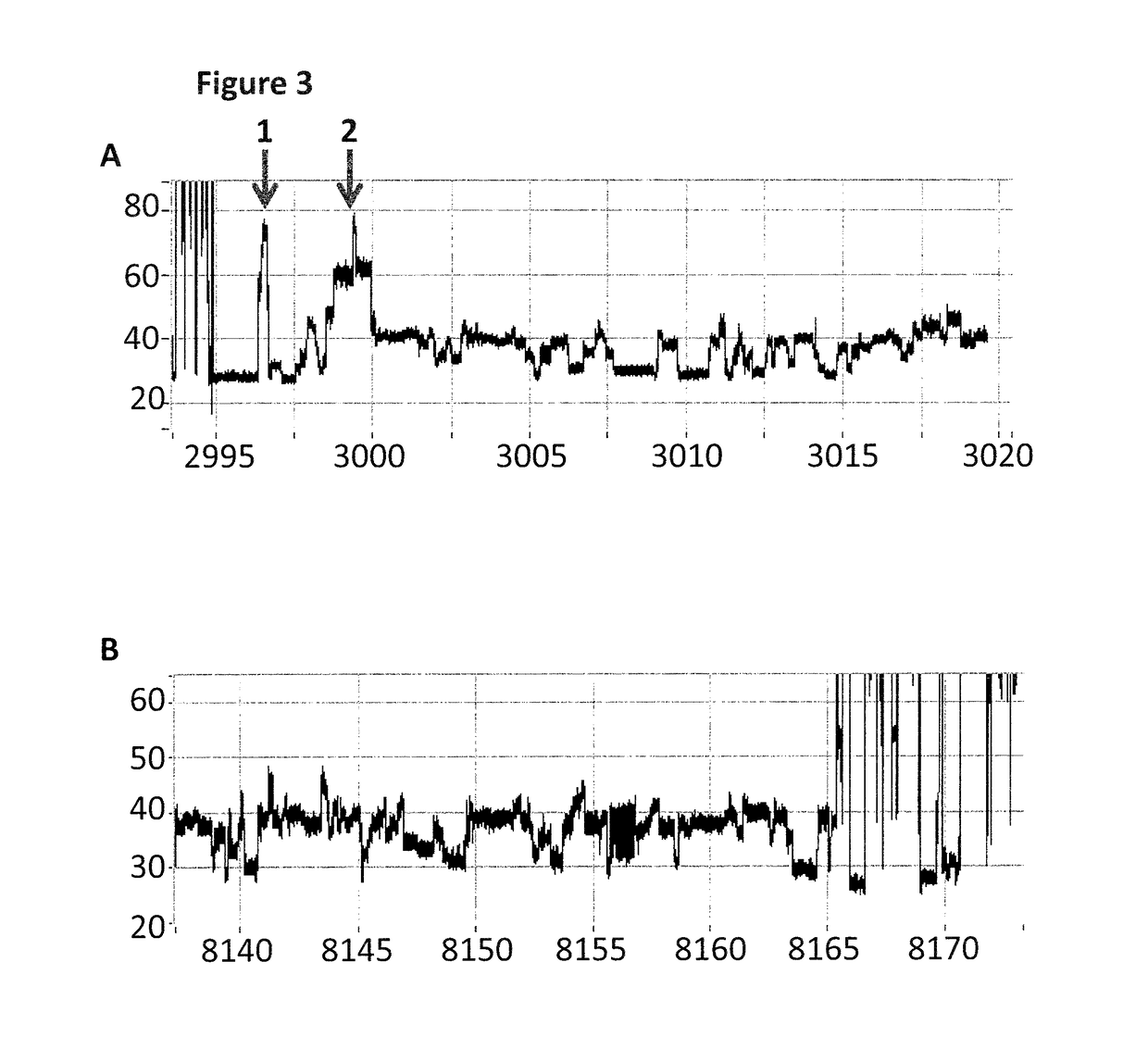Enzyme stalling method
a technology of stalling and enzymes, applied in the field of stalling of enzymes, can solve the problems of slowness and high cost of existing technologies, and achieve the effect of controlling the loading of one or more helicases
- Summary
- Abstract
- Description
- Claims
- Application Information
AI Technical Summary
Benefits of technology
Problems solved by technology
Method used
Image
Examples
example 1
[0272]This example describes how a T4 Dda-E94C / A360C (SEQ ID NO: 8 with mutations E94C / A360C and then (ΔM1)G1G2) helicase can control the movement of intact DNA strands through a single MspA nanopore (MS(B1-G75S / G77S / L88N / Q126R)8 (MspA-B2C) (SEQ ID NO: 2 with mutations G75S / G77S / L88N / Q126R). The iSpC3 spacers in the lambda DNA construct (SEQ ID NO: 9 attached by its 3′ end to four iSpC3 spacers which are attached to the 5′ end of SEQ ID NO: 10 which is attached to three iSpC3 spacers which are attached to the 3′ end to SEQ ID NO: 11, the SEQ ID NO: 10 region of this construct is hybridised to SEQ ID NO: 12 (which has attached to its 3′ end, six iSp18 spacers attached to two thymine residues and a 3′ cholesterol TEG)) are used to stall the enzyme until the construct is captured by the nanopore. Upon capture the force of the applied potential moves the enzyme T4 Dda-E94C / A360C past the stalling spacer and allows enzyme controlled DNA movement of the lambda construct through the nanopo...
example 2
[0276]The DNA construct used in this example was produced by fragmentation of Lambda DNA into ˜5-10 kB fragments using MuA. The fragments which were produced by the sample prep were then passed through a nanopore, with their movement controlled by a helicase enzyme. The helicase was moved past the dsDNA region (where the tether hybridises to the construct) and the spacers by the force of the applied potential across the nanopore. The observance of characteristic blocks produced by the helicase controlled movement of the markers through the nanopore showed the sample preparation procedure had been successful and that the enzyme had been stalled as shown in FIG. 4(b). This meant that the enzyme had a defined start point and was unable to move past the dsDNA region (where the tether hybridises to the construct) and spacers until captured by the nanopore.
Materials and Methods
2.1 Anneal of DNA Strands to Form Y-Shaped and Hairpin MuA Substrates
[0277]The Y-shaped and hairpin MuA substrate...
example 3
[0288]The DNA construct used in this example was produced by fragmentation of Lambda DNA into ˜5-10 kB fragments using MuA. This example is similar to the one described in Example 2, however, the sample preparation procedure is different (steps 2.3 and 2.4 as described above are not required) as the transposase sequences contain inosines in this example. The enzyme was moved past the dsDNA region and the spacers by the force of the applied potential across the nanopore.
Materials and Methods
3.1 Anneal of DNA Strands to Form Y-Shaped and Hairpin MuA Substrates
[0289]The Y-shaped 2 and hairpin 2 MuA substrates were prepared as described in Example 2.1 above. Volumes, concentrations and sequences that were used in this example are detailed in table 9 below. The DNA substrate designs of the two constructs formed are shown in FIG. 6 (a).
[0290]
TABLE 9FinalY-Hair-Concen-Reagentshaped 2pin 2trationsWater12 uL 14 uL 0.5M NaCl2 uL2 uL 50 mM0.1M Tris pH 7.52 uL2 uL 10 mMSEQ ID NO: 14 and 15 (whe...
PUM
| Property | Measurement | Unit |
|---|---|---|
| voltage | aaaaa | aaaaa |
| voltage | aaaaa | aaaaa |
| voltage | aaaaa | aaaaa |
Abstract
Description
Claims
Application Information
 Login to View More
Login to View More - R&D
- Intellectual Property
- Life Sciences
- Materials
- Tech Scout
- Unparalleled Data Quality
- Higher Quality Content
- 60% Fewer Hallucinations
Browse by: Latest US Patents, China's latest patents, Technical Efficacy Thesaurus, Application Domain, Technology Topic, Popular Technical Reports.
© 2025 PatSnap. All rights reserved.Legal|Privacy policy|Modern Slavery Act Transparency Statement|Sitemap|About US| Contact US: help@patsnap.com



